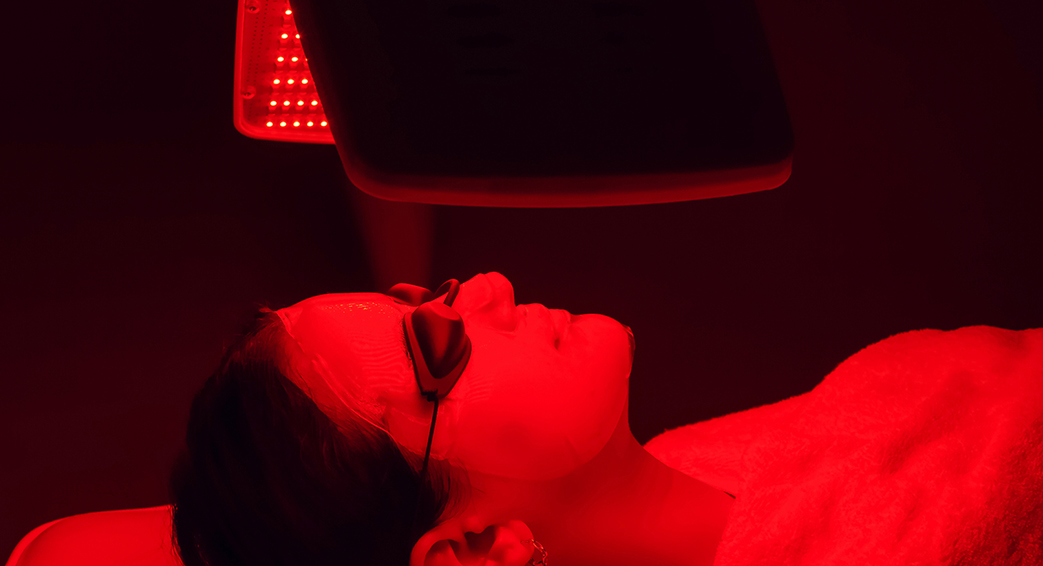Hair loss affects millions worldwide, leading many to explore various treatment options. Among the most popular and non-invasive approaches are red light therapy caps, LED devices, and low-level light therapy (LLLT) devices. While these terms are often used interchangeably, they represent distinct technologies with varying levels of efficacy for hair loss sufferers.
This article explores the differences between these technologies, examines the evidence supporting their use for hair loss, and highlights why patients need to choose carefully when considering these devices.
What Is Low-Level Light Therapy (LLLT)?
LLLT is a clinically tested and FDA-cleared therapy for treating hair loss. It uses specific wavelengths of light, typically in the range of 630–670 nanometers (nm), to stimulate cellular activity in the scalp. The principle behind LLLT is photobiomodulation, where light energy penetrates the skin to stimulate hair follicles and improve their function.
Numerous studies have shown that LLLT can:
- Increase the duration of the growth (anagen) phase of hair follicles.
- Improve the thickness and density of hair in individuals with common male and female pattern hair loss.
- Reduce inflammation around the follicle, which may slow or halt hair loss progression.
The evidence supporting LLLT devices is robust, with double-blind, randomized controlled trials demonstrating significant improvements in hair counts in both men and women.
How Do LED Caps Differ from LLLT Devices?
LED (Light Emitting Diode) caps are often marketed alongside LLLT devices, but their mechanisms and efficacy differ significantly. While LLLT devices use laser diodes to deliver concentrated light energy, LED caps use light-emitting diodes that scatter light across a broader area with less precision and power.
Key differences include:
-
Light Penetration:
LLLT lasers produce coherent light that penetrates deeper into the scalp, targeting hair follicles more effectively. LEDs emit non-coherent light, which tends to scatter, resulting in less penetration and reduced therapeutic impact on the follicles. -
Energy Output:
LLLT devices provide a higher energy density compared to LED caps, ensuring the follicles receive adequate stimulation. LED caps, while more affordable, often lack the power needed to induce meaningful changes in hair growth. -
Clinical Evidence:
While there is substantial clinical evidence supporting LLLT for hair loss, the data on LED caps is limited. Most studies on LED therapy focus on general skin health or wound healing, not hair growth.
What About “Red Light” Therapy?
Red light therapy refers broadly to the use of red-spectrum light (typically around 630–660 nm) for health benefits. It is often used in devices like panels or handheld tools for skin rejuvenation, pain relief, and inflammation reduction.
Although red light therapy has shown promise for these applications, its effectiveness in treating hair loss is less established. Most consumer-grade red light devices lack the power and targeted delivery required to stimulate hair follicles. The scattered light emitted by LEDs in these devices is unlikely to penetrate the scalp deeply enough to influence follicular activity meaningfully.
What the Evidence Says About Hair Loss Treatment
The strongest evidence for light-based treatments for hair loss lies with LLLT devices that meet specific criteria:
- FDA Clearance: Only devices that have been cleared for hair growth have undergone rigorous testing for safety and efficacy.
- Laser Diodes vs. LEDs: Devices with medical-grade laser diodes are more effective than those using LEDs.
- Energy and Wavelength Specificity: Devices delivering light in the therapeutic range of 630–670 nm with adequate power output yield the best results.
Red Light Therapy’s Other Potential Health Benefits
Although the evidence for red light therapy in hair loss is weak, research suggests it may offer other health benefits, including:
- Enhanced wound healing.
- Reduced inflammation in various conditions.
- Improved skin health and collagen production.
- Relief of muscle and joint pain.
However, patients seeking hair loss treatment should not confuse these broader health benefits with proven efficacy for hair growth.
Choosing the Right Device
When considering a light-based treatment for hair loss, consumers should keep the following points in mind:
- Look for FDA-Cleared Devices: Ensure the product is specifically cleared for treating hair loss.
- Consider Proven Technology: LLLT devices with laser diodes provide the most reliable results.
- Beware of Marketing Claims: Many devices marketed as “red light” or LED caps lack sufficient evidence to support their efficacy for hair loss.
- Consult a Specialist: A hair loss expert can guide you toward the most effective and safe treatment options.
Conclusion
While red light therapy and LED caps may offer general health benefits, the science strongly supports LLLT as the gold standard for light-based hair loss treatments. Hair loss sufferers should be cautious of devices that rely solely on LED technology or broad red light therapy claims, as these lack the proven effectiveness of true LLLT devices.
By understanding these distinctions and seeking out evidence-based solutions, patients can make informed decisions and optimize their chances of achieving meaningful results in their hair restoration journey.
Keywords: LLLT, LED caps, red light therapy, hair loss treatment, photobiomodulation, evidence-based hair restoration
